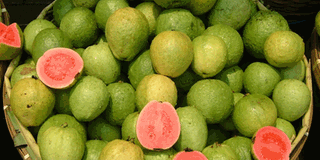Prime
Guavas: Common in homesteads but hardly on the market

When sorted for the market, grapes are packed and sold in small amounts in tins or in larger quantities in boxes. Courtesy photo.
What you need to know:
Though one is likely to find a guava tree in almost every farm or compound in the country, there are not many people who have taken on growing them on a large scale. Mr James Katumba, a fruit trader in Nakasero Market, says that this explains why there are few guavas on the market. He adds that there are not as many customers who like guavas.
Though one is likely to find a guava tree in almost every farm or compound in the country, there are not many people who have taken on growing them on a large scale. Mr James Katumba, a fruit trader in Nakasero Market, says that this explains why there are few guavas on the market. He adds that there are not as many customers who like guavas. “Among the fruits I sell, the guavas are some of the fruits that I hardly get customers for.” However, because most of the guavas are small in size, when one comes to buy, many customers will take as many of them as they can.
Those who eat guava can benefit from it health wise because it is a source of Vitamin C and calcium. Mr Katumba says that most of his customers prefer guavas with hard skins than the ones with the soft skins. He believes that it is because these “have a nice flavour and are sweet.”
Different times, different areas
The more fertile the soil is, the faster the guava tree will grow. It could take between two and three years to produce fruits and one tree can produce over 50 guavas. According to World Agroforestry Centre, the guava tree can bear fruits for 15-25 years.
Ms Jane Nakato, a trader in Owino Market, says that the season for guavas is always in the middle and end of the year. This varies from one area to another. “Many times the guavas don’t sprout at the same time, so, we receive the guavas at different times from different areas,” she explains.
However, this does not mean there are always guavas on the market. Like many plants and fruits, sometimes the weather affects them.
The traders say that usually the dry season is not favourable to the growth of the fruit unlike the wet season. There are also insect pests, which particularly attack the guavas.
Of course when there is scarcity of the fruit, the prices will go up or the price will remain the same but the amount of guavas sold at a particular time will definitely vary. The “soft” guavas are usually sold in kilos and currently a kilo costs Shs3,000 but the price can go down to Shs2,500 when in plenty. For the “hard” guavas, four of them cost Shs1,000 but this amount increases when they are available.
The “soft” guavas only take a week to rot after harvest whereas the other ones can remain fresh for more than a week. Except for keeping them in a dry area, Katumba says there is not much esle one can do to preserve them.




